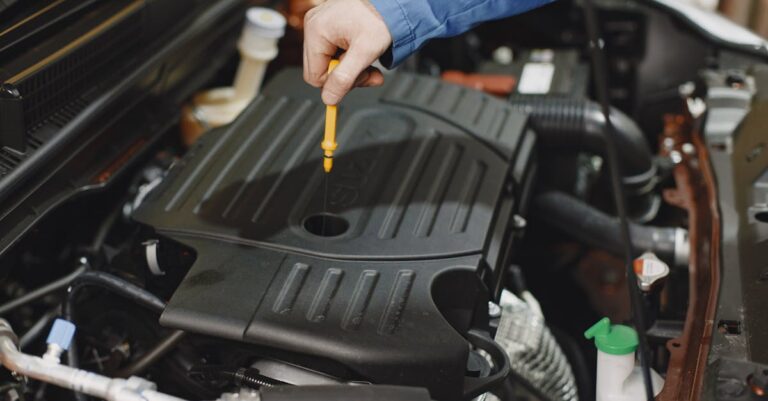Table of Content
- Don’t Ignore These Red Flags: Common Transmission Problems Signs You Need to Know
- Why Your Transmission Matters (A Quick Refresher)
- Spotting Trouble Early: Key Signs of Transmission Issues
- Strange Noises: Whining, Humming, or Clunking?
- Gear Shifting Problems: Rough, Delayed, or Slipping
- Leaking Fluid: The Red Puddle of Doom?
- Burning Smell: A Sign of Overheating
- Check Engine Light: The Vague Warning
- Grinding or Shaking Sensations
- Lack of Response or Power
- Fluid That’s Dark, Cloudy, or Smells Burnt
- Automatic vs. Manual Transmission: Specific Signs
- What Should You Do If You Suspect Transmission Problems?
- The Cost of Ignoring the Signs
- Conclusion: Listen to Your Car
- FAQs About Transmission Problems
Don’t Ignore These Red Flags: Common Transmission Problems Signs You Need to Know
Okay, let’s talk about something crucial for your car’s health: the transmission. Think of it as the unsung hero working tirelessly behind the scenes (or rather, under the hood) to make sure your car moves smoothly. But what happens when this hero starts to falter? Ignoring the warning signs can lead to some seriously expensive headaches down the road. You wouldn’t ignore a strange noise in your house, right? Same goes for your car! Your vehicle often gives subtle (and sometimes not-so-subtle) hints when something’s amiss with its transmission. Learning to recognize these common transmission problems signs can save you a bundle and keep you safe on the road. So, buckle up as we dive into the signals your car might be sending you.
Why Your Transmission Matters (A Quick Refresher)
Before we get into the nitty-gritty of problem signs, let’s quickly refresh why your transmission is so important. In simple terms, the transmission is like the translator between your engine and your wheels. The engine creates power, spinning really fast, but that raw speed isn’t always practical for driving. The transmission takes that power and adjusts it, using a system of gears (in both automatic and manual setups), to deliver the right amount of torque and speed to the wheels whether you’re cruising on the highway or crawling through city traffic. Without a functioning transmission, your engine’s power is useless – your car simply won’t go anywhere, or at least not efficiently or reliably. It’s a complex piece of machinery, and keeping it happy is key to a smooth ride.
Spotting Trouble Early: Key Signs of Transmission Issues
The good news is, transmissions usually don’t just fail catastrophically out of the blue. They often give warning signs. Being attuned to your car’s normal behavior – how it sounds, how it feels when shifting – is your best defense. If you notice any of the following changes, it’s time to pay attention.
Strange Noises: Whining, Humming, or Clunking?
Your car makes all sorts of noises, but new, unusual sounds emanating from the transmission area are definite red flags. Are you hearing a persistent whining sound that changes pitch as you accelerate or decelerate? Does it sound like a low hum that wasn’t there before? Or perhaps you hear distinct ‘clunking’ or ‘thudding’ sounds when the gears shift?
What Those Sounds Might Mean
These aren’t just random background noises. Whining or humming, especially in an automatic transmission, can often point to issues with the torque converter or planetary gear set, or it could simply be low transmission fluid causing components to work harder and generate noise. Clunking or banging sounds during shifts can indicate more severe internal problems, worn universal joints (U-joints) or transmission mounts, or even issues with the differential. Manual transmissions might produce a more mechanical grinding noise if the clutch isn’t disengaging properly or if synchronizers are worn. Don’t just turn up the radio – investigate!
Gear Shifting Problems: Rough, Delayed, or Slipping
This is perhaps one of the most direct indicators of transmission trouble. How your car shifts gears is fundamental to its operation. Any deviation from smooth, timely shifts warrants immediate attention. Does it feel like your automatic transmission hesitates or slams into gear? Does your manual transmission resist going into gear or pop out unexpectedly?
The Feel of Faulty Shifting
You know how your car normally feels when it shifts. When problems arise, you might experience rough or harsh shifts – instead of a seamless transition, you feel a noticeable jolt or bang. Another sign is delayed engagement. You shift from Park to Drive, hit the gas, and… nothing happens for a second or two before it finally engages with a clunk. This delay signals internal issues, often related to fluid pressure or worn components. In a manual, difficulty getting the shifter into gear, or needing excessive force, often points towards clutch problems, worn linkages, or low fluid.
Slipping Gears Explained
Gear slippage is a particularly concerning symptom. This is when the transmission spontaneously shifts out of the gear it’s supposed to be in, or the engine revs up high without a corresponding increase in speed, as if it’s temporarily in neutral. It feels like the car is losing power momentarily. This can happen while accelerating or even cruising. Slipping indicates significant internal wear, usually on the clutch packs (in automatics) or the clutch itself (in manuals), or it could be due to critically low or burnt fluid failing to provide the necessary hydraulic pressure. This is not just annoying; it’s dangerous, especially if it happens when you need power, like merging onto a highway.
Leaking Fluid: The Red Puddle of Doom?
Have you noticed reddish or brownish puddles under your car, especially towards the middle or front? While not always doom, it’s certainly a cause for concern. That colorful puddle might very well be transmission fluid.
Identifying Transmission Fluid Leaks
Transmission fluid is typically bright red (though it can darken with age) and has a slightly sweet or oily smell when new. It feels slick to the touch. If you see spots matching this description on your driveway or garage floor, you likely have a leak. Common leak points include worn seals (like the output shaft seal, input shaft seal, or pan gasket), cracked fluid lines, or a damaged transmission pan. Sometimes leaks only occur when the car is running and the fluid is circulating under pressure.
Why Leaks Are a Big Deal
Your transmission relies *heavily* on this fluid. It acts as a lubricant for the moving parts, a coolant to prevent overheating, and a hydraulic fluid to enable shifting (especially in automatics). Even a small leak can lead to low fluid levels, which spells trouble. Low fluid causes increased friction, overheating, erratic shifting, and eventually, catastrophic failure if left unaddressed. Finding and fixing the source of the leak is crucial.
Burning Smell: A Sign of Overheating
Our noses can be great diagnostic tools! If you catch a whiff of a distinct burning smell, almost like burnt toast or scorched oil, coming from your car, don’t ignore it. While other issues can cause burning smells, overheated transmission fluid is a common culprit.
This smell often indicates that the transmission fluid is breaking down due to excessive heat. Overheating can be caused by low fluid levels (remember those leaks?), heavy towing beyond the vehicle’s capacity, stop-and-go driving in hot weather, or internal transmission problems creating excessive friction. Burnt fluid loses its lubricating and cooling properties, accelerating wear and tear on internal components. If you smell this, check your fluid (if possible and safe) and get the transmission inspected pronto.
Check Engine Light: The Vague Warning
Ah, the dreaded check engine light. It’s the car’s way of saying “Something’s wrong, but I won’t tell you exactly what!” While this light can illuminate for countless reasons, from a loose gas cap to serious engine trouble, it can also indicate transmission problems.
Modern vehicles have sophisticated sensors monitoring the transmission’s operation. If a sensor detects slippage, overheating, solenoid issues, or problems with fluid pressure or temperature, it will trigger the check engine light and store a diagnostic trouble code (DTC) in the car’s computer. While you can’t know the exact cause from the light alone, a mechanic can scan the computer for these codes, which provide valuable clues pointing towards the transmission (or confirming it’s something else entirely). Never ignore a check engine light, especially if it accompanies any other symptoms mentioned here.
Grinding or Shaking Sensations
Beyond clunking noises during shifts, you might feel a distinct grinding sensation or vibration, especially in a manual transmission car. When you press the clutch pedal or try to shift gears, does it feel like gears are grinding against each other? Or does the car shake or shudder, particularly during acceleration at certain speeds?
Grinding in a manual often points to a worn-out clutch or problems with the gear synchronizers (the components that help match gear speeds for smooth shifting). Shaking or shuddering, which can occur in both automatics and manuals, might indicate issues ranging from worn U-joints or CV axles (technically part of the drivetrain, but related) to internal transmission problems like torque converter shudder in automatics. It’s an unsettling feeling that tells you something isn’t meshing correctly.
Lack of Response or Power
Does your car feel sluggish or unresponsive? You press the accelerator, the engine revs, but the car doesn’t accelerate as it should? This lack of power delivery can sometimes stem from the transmission.
If the transmission isn’t shifting correctly, is slipping, or isn’t efficiently transferring power from the engine to the wheels, the result is poor acceleration and a feeling that the car is struggling. It might feel like you’re driving with the parking brake partially engaged. While engine issues can also cause sluggishness, if it coincides with shifting problems or strange noises, the transmission is a likely suspect.
Fluid That’s Dark, Cloudy, or Smells Burnt
We talked about leaks and burning smells, but the condition of the fluid itself is a huge indicator. Many automatic transmissions have a dipstick (similar to the engine oil dipstick) allowing you to check the fluid level and condition. Consult your owner’s manual to see if your car has one and how to check it correctly (often requires the engine to be running and the transmission warm).
Healthy automatic transmission fluid (ATF) is typically translucent and bright red. If you check the fluid and find it’s dark brown or black, cloudy, or has that distinct burnt smell we discussed earlier, it’s a bad sign. Dark, murky fluid indicates it’s old, broken down, or contaminated with debris from wearing internal parts. Burnt fluid confirms an overheating issue. Using degraded fluid is like asking your transmission to run a marathon with dirty water instead of proper lubrication – it won’t end well. Regular fluid changes are vital, but significantly degraded fluid often points to underlying problems needing professional diagnosis.
Automatic vs. Manual Transmission: Specific Signs
While many signs are universal, some are more specific to the type of transmission you have.
Automatic Transmission Woes
Automatics are complex hydraulic systems. Beyond the general signs, look out for issues specific to them, like problems engaging Park or Drive, refusal to shift out of a particular gear (limp mode), or shuddering at specific speeds which might indicate torque converter issues. The torque converter acts like a fluid coupling, replacing the mechanical clutch of a manual, and it can develop problems like worn internal bearings or lock-up clutch failure.
Manual Transmission Troubles (Clutch Issues)
With manual transmissions, many “transmission” problems are actually related to the clutch. Signs include:
- Spongy, Sticking, or Loose Clutch Pedal: Difficulty pressing the pedal, or it feels different than usual.
- Difficulty Shifting Gears: Especially grinding when trying to engage first or reverse.
- Clutch Slippage: Engine revs increase, but speed doesn’t (similar to automatic slippage, but related to the clutch disc).
- Noise When Pressing the Clutch Pedal: Could indicate a worn release bearing or pilot bearing.
While internal manual gearbox issues (like worn gears or synchronizers) can occur, clutch problems are more frequent wear-and-tear items.
What Should You Do If You Suspect Transmission Problems?
Okay, so you’ve noticed one or more of these signs. What now? Panic? Definitely not! But prompt action is key.
- Check the Fluid (If Applicable): If your car has a dipstick and you feel comfortable, check the transmission fluid level and condition when the engine is warm and running (follow your manual’s instructions precisely!). Low or burnt fluid is a definite sign to seek help.
- Note the Symptoms: Pay close attention to exactly what you’re experiencing. When does it happen? What does it sound/feel like? The more specific information you can give a mechanic, the better.
- Limit Driving: If you suspect serious issues like slipping, harsh shifting, or major leaks, it’s best to minimize driving or stop altogether. Continuing to drive can turn a potentially smaller repair into a complete transmission rebuild or replacement.
- Consult a Professional: Transmission work is complex. Take your car to a trusted mechanic or a transmission specialist shop. They have the diagnostic tools and expertise to pinpoint the problem accurately. Don’t delay – early diagnosis often leads to less expensive repairs.
The Cost of Ignoring the Signs
Let’s be blunt: ignoring transmission problems is like playing financial Russian roulette with your car. What might start as a relatively minor issue – a leaking seal, low fluid, a faulty sensor or solenoid – can quickly cascade into major internal damage if neglected. Metal shavings from worn parts can circulate through the fluid, damaging other components. Overheating can warp parts and destroy seals and clutches. The difference in cost between fixing a small leak or replacing a sensor versus needing a full transmission rebuild or replacement can be staggering – often thousands of dollars. Beyond the financial cost, a failing transmission can compromise your safety if it acts unpredictably on the road.
Conclusion: Listen to Your Car
Your car is constantly communicating with you through sounds, smells, and sensations. Learning to recognize the common signs of transmission trouble – the strange noises, the shifting problems, the leaks, the smells, the warning lights – empowers you as a car owner. Think of these signs not as a catastrophe, but as an early warning system. By paying attention and addressing potential issues promptly, you can often prevent minor problems from escalating into budget-busting repairs. Keep your transmission fluid maintained, be aware of how your car normally operates, and don’t hesitate to seek professional help if something feels off. Your transmission, and your wallet, will thank you for it.
FAQs About Transmission Problems
- Can low transmission fluid cause permanent damage?
Absolutely. Transmission fluid is vital for lubrication, cooling, and hydraulic pressure. Running the transmission significantly low on fluid can lead to overheating, increased friction, and rapid wear on internal components like gears, clutches, and bearings. Even if you top it off later, damage may have already occurred. Addressing leaks and maintaining the correct fluid level is crucial.
- Is a transmission flush always a good idea if I suspect problems?
Not necessarily. While regular fluid changes are important maintenance, a high-pressure “flush” on an older transmission that hasn’t been regularly serviced, or one already showing significant problems, can sometimes dislodge built-up debris and actually worsen the situation or cause failure. If your fluid is burnt or very dirty, a simple fluid and filter change (a “drain and fill”) might be safer. Always consult a trusted mechanic about the best course of action for your specific vehicle and situation.
- How often should I change my transmission fluid?
It varies significantly. Check your vehicle’s owner’s manual for the manufacturer’s recommended service interval. It can range anywhere from every 30,000 miles to “lifetime” fluid (though many mechanics recommend changing even lifetime fluid around 100,000 miles). Factors like driving conditions (heavy towing, lots of city driving) can shorten the interval. When in doubt, ask your mechanic.
- If my check engine light comes on, how do I know if it’s the transmission?
You need to get the codes read. The check engine light itself is just a general warning. Auto parts stores often offer free code reading services, or a mechanic can perform a diagnostic scan. The stored Diagnostic Trouble Codes (DTCs) will point towards the specific system or sensor that triggered the light. Codes starting with “P07” (e.g., P0700, P0730) typically indicate transmission-related issues.
- Can driving style affect transmission life?
Yes, significantly. Aggressive driving with hard acceleration and abrupt stops puts extra strain on the transmission. Frequent heavy towing or hauling, especially beyond the vehicle’s rated capacity, generates excessive heat, which is a major enemy of transmissions. Smooth, conservative driving and adhering to towing limits can help prolong your transmission’s lifespan.









